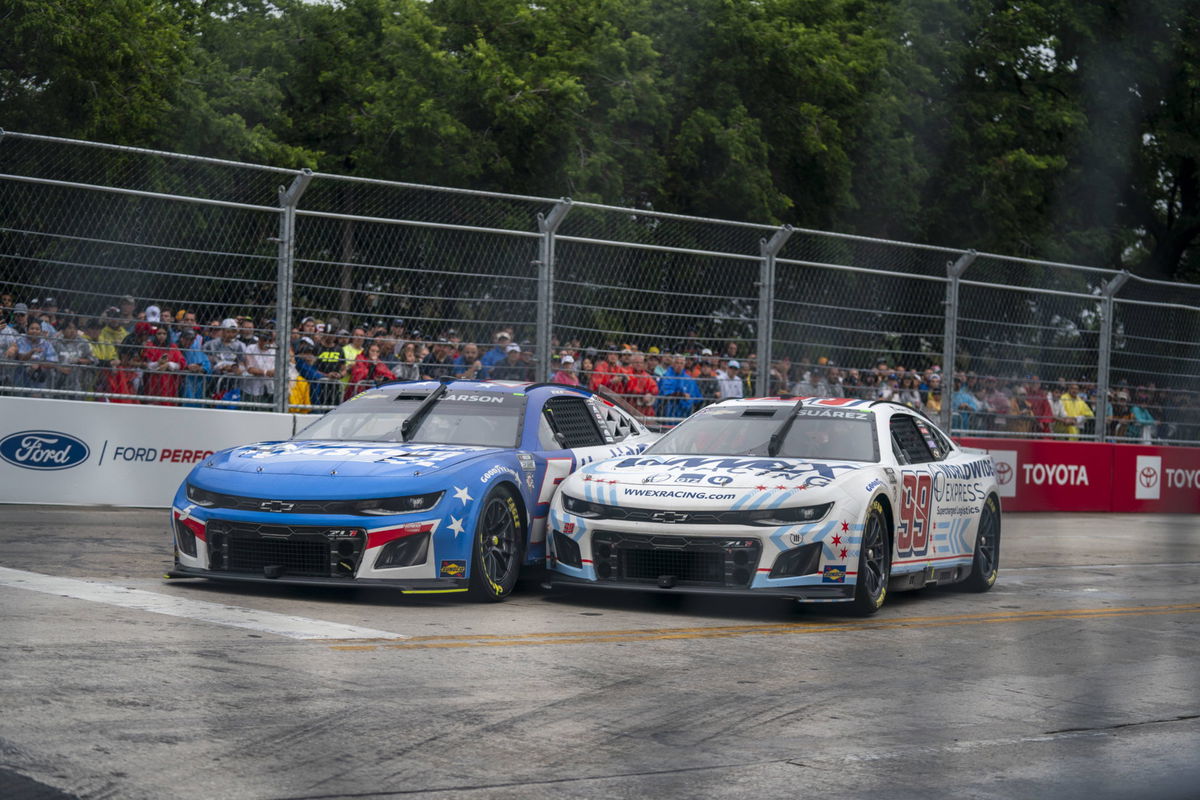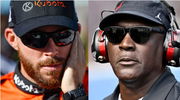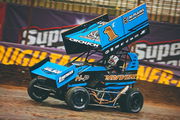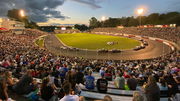
Imago
July 2, 2023, Chicago, Illinois, USA: NASCAR, Motorsport, USA Cup Driver, KYLE LARSON 5 races for position through the city streets for the Inaugural Grant Park 220 on the Chicago Street Course. Chicago USA – ZUMAries 20230702_mda_a161_230 Copyright: xLoganxTxArcex

Imago
July 2, 2023, Chicago, Illinois, USA: NASCAR, Motorsport, USA Cup Driver, KYLE LARSON 5 races for position through the city streets for the Inaugural Grant Park 220 on the Chicago Street Course. Chicago USA – ZUMAries 20230702_mda_a161_230 Copyright: xLoganxTxArcex
Torrential rainfall, Canadian wildfire haze, and an atmosphere of skepticism. That’s what plagued NASCAR’s Chicago Street Race 1.0 last year, as the 12-turn, 2.2-mile course saw canceled concerts, smaller crowds, and shorter races. This time around, the street race could face a different challenge altogether. Planned protests by Chicago firefighters could threaten the event, despite Chicagoans being more accepting of NASCAR’s visit to their city, even though it may cause disruptions to their daily lives.
Watch What’s Trending Now!
With the kind of economic and media impact Chicago Street Race 1.0 made, it’s not surprising that firefighters have chosen the occasion to make themselves heard, in what is a more pressing matter than the sport itself! But there are chances that it could hinder
ADVERTISEMENT
Chicago firefighters to stage protests on NASCAR weekend
As the city braces itself for Chicago Street Race 2.0 on July 8th, there are bigger underlying issues that are brewing simultaneously. Firefighters have called out the city for not having enough paramedics and ambulances, wanting amends to be made as part of their new union contract. With burnout at an all-time high, the protestors at the NASCAR event will demand more paramedics be hired on an urgent priority and salaries be raised, having been frozen since 2021.
Speaking to CBS News, Battalion Chief Patrick Cleary, who is president of the firefighters union, said, “There are days every day where the alarm office is saying, ‘Is there an ambulance available? Is anybody available? That’s in the entire city, and then, in the meantime, they’re calling on the engines and trucks to report to those scenes until an ambulance can get there.”
The situation with firefighters in Chicago is dire. In 2023, paramedics worked nearly 230,000 hours of overtime just to staff the city’s 80 ambulances, and they are on the same pace for 2024. This highlights a significant problem. Cleary also mentioned the need for more mental health counseling and for firefighters and paramedics to be given time off to grieve when they lose colleagues in the line of duty from the same firehouse.
ADVERTISEMENT
Despite these challenges and the planned protests by the city’s bravest, there seems to be a growing acceptance of the upcoming NASCAR event this year compared to last year. After witnessing NASCAR successfully pull off its first street race in 75 years, Chicagoans have started to understand its appeal and have become more open-minded about the event.
“I think the big difference this year versus last year is people have an understanding of what the event is and how it comes together and what to expect,” said Julie Giese, 46, president of NASCAR’s Chicago Street Race as per Chicago Tribune. “It wasn’t as bad as everyone expected last year as far as moving around the city.”
ADVERTISEMENT
Tim Calkins, a marketing professor at Northwestern University’s Kellogg School of Management, also revealed, “They understand there’s some appeal to it, and they’re much more open-minded to welcome the event to the city.”
The firefighters are planning to gain attention and ensure their grievances are heard. As a result, this protest is being strategically planned for the NASCAR event, which drew a substantial crowd last year, significantly impacting the city. With thousands of fans expected to attend the race again this year, any disruption could potentially affect the race timings and logistics.
Top Stories
Exclusive: Catching Up With ‘The Dinger’ — the Past, Present and Future of AJ Allmendinger

“I’d Be Dead”: NASCAR Legend Credits Kevin Harvick for Saving His Life

“I’m Worried” – Ross Chastain Confesses Fears of Triggering Michael Jordan’s Lawsuit Wrath With Humble 3-Word Claim

Chaotic Brawl Breaks Out at Tulsa Shootout After Teen Flips Off Rival Driver

Historic NASCAR Track to Change Its Iconic Name as City Council Moves to Auction It Up

ADVERTISEMENT
Why will Chicago Street Race 2.0 be bigger and better?
Unlike last year, Chicago Street Race 2.0 will have a faster and less disruptive schedule. While much of what we saw last year will remain the same, such as the temporary fences, hospitality suites, and grandstands, NASCAR has agreed to reduce the setup and breakdown schedule by six days, reducing it from 25 to 19 days. There will also be an expanded NASCAR Village at Butler Field, as well as single-day admission tickets for $150. Children under the age of 12 will be admitted free of charge on Saturday, while the cost will be $45 on Sunday.
As for entertainment, the likes of Lauren Alaina, The Chainsmokers, Keith Urban, The Black Keys, and Buddy Guy are expected to bring back the summer vibe that was missing earlier. Speaking about how the rain affected the event last year, Julie Giese said, “The weather was definitely a challenge. I think the key takeaway on that, though, is that we were able to get the event in. We were able to do it very successfully, in spite of record rainfall, and we did learn a lot.”
ADVERTISEMENT

According to Giese, the attendance target for this year will be 50,000 per day and 100,000 for the weekend, a significant improvement as compared to last year.
ADVERTISEMENT
NASCAR is certainly motivated to make the Chicago Street Race work for the Cup Series and Xfinity Series. After Shane van Gisbergen‘s surprise victory on his debut, expectations are high this time around, and NASCAR can sense a lucrative opportunity. While the event has not been profitable so far, NASCAR will pay $550,000 as per a three-year deal struck during Mayor Lori Lightfoot’s administration, a $50,000 increase compared to last year, and $2 million to cover any expenses related to the event, including police overtime.
With the event on the horizon, all stakeholders involved will pray to the rain gods to stay away so that NASCAR’s Chicago experiment pays off! Moreover, since firefighters and paramedics are part of the city’s critical safety infrastructure, their protest could have broader implications for public safety and emergency response throughout Chicago. The potential absence of these essential personnel during a large-scale event could strain resources and affect the overall safety of both the race and the city’s residents.
ADVERTISEMENT
ADVERTISEMENT
ADVERTISEMENT

